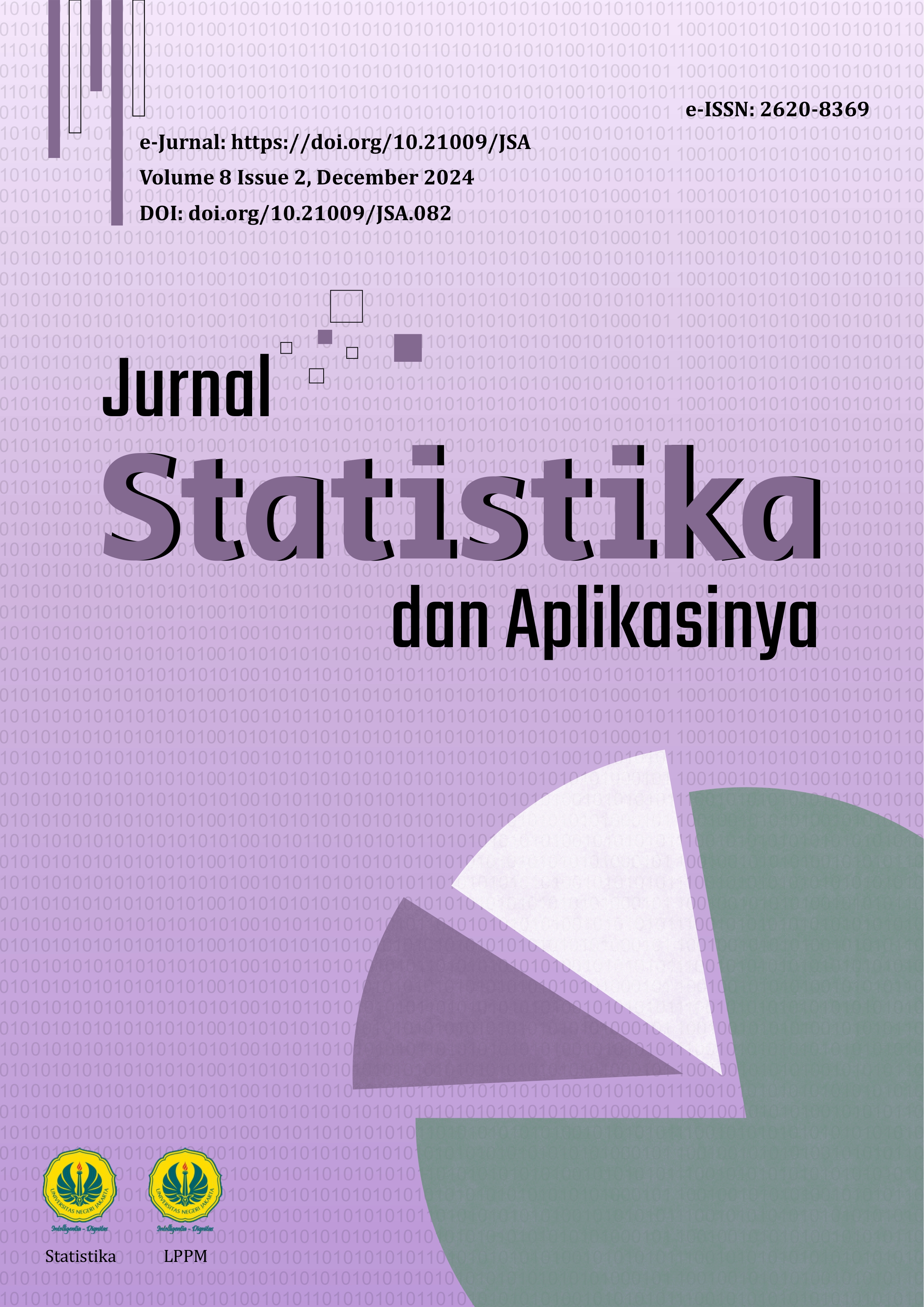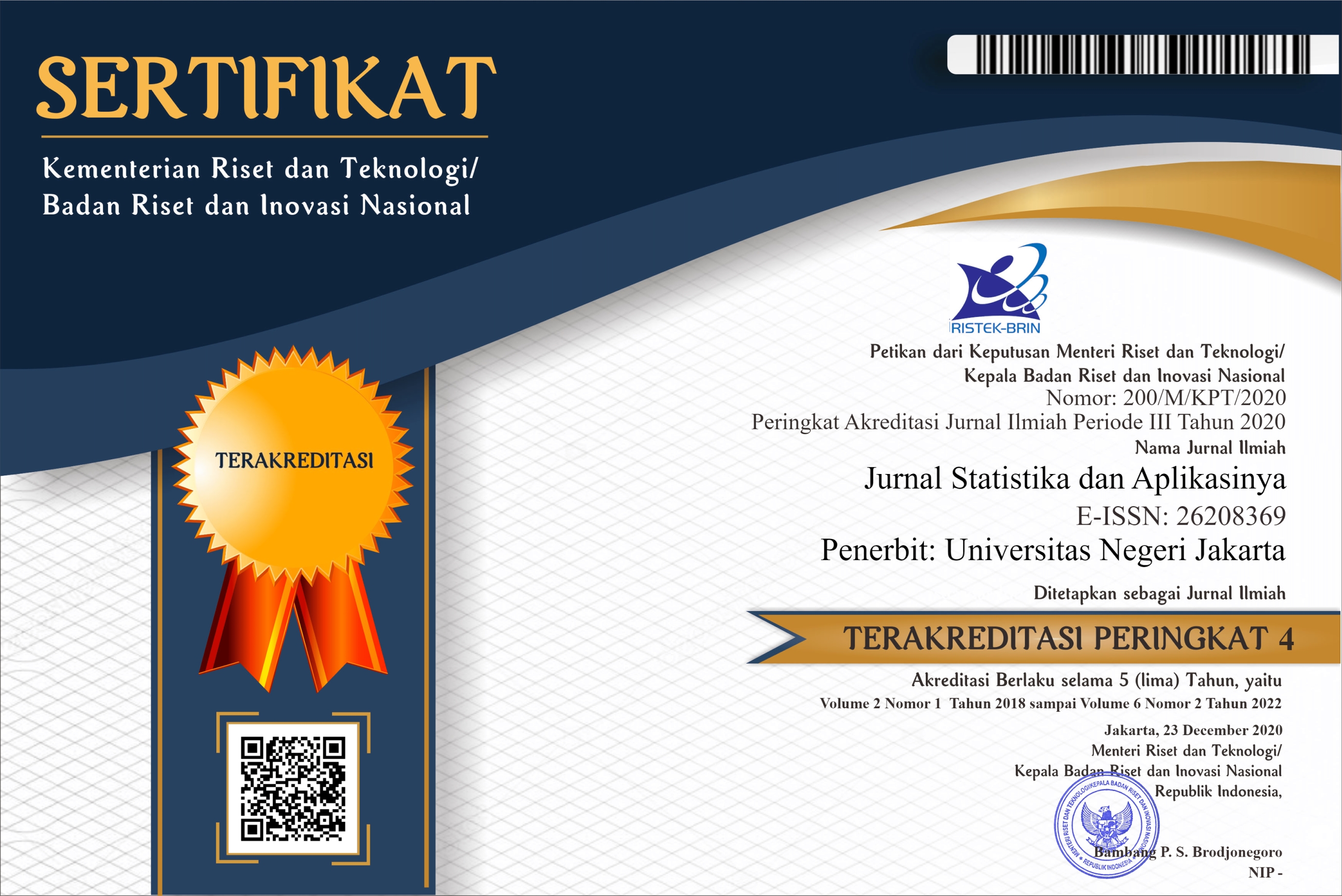FORECASTING HORTICULTURAL PRODUCTION BASED ON RAINFALL WITH VECTOR AUTOREGRESSIVE EXOGENOUS (VARX) METHOD
DOI:
https://doi.org/10.21009/JSA.08203Abstract
Changes in the production yield of three leading commodities in NTB Province continue to fluctuate and may harm society. To examine the condition of the production of cayenne pepper, red onion, and tomatoes based on rainfall in the coming period, a model is needed that can predict multivariate time sequence data. There are several models of multivariate time sequence analysis, one of which is the autoregressive exogenous vector (VARX). The VARX model is a multivariate time series model consisting of several endogenous variables (p) and supplemented with exogenous variables (q). The purpose of this study is to obtain a suitable VARX model and an estimation of cayenne pepper, onion, and tomato data. Using the VARX method, the optimum lag was obtained with the smallest Akaike Information Criterion (AIC) value, namely at lag 5 with a value of 66.5160. Based on the overfit carried out, the appropriate and best model to be estimated is VARX (1.1) with a total value of 66.42364, which meets the assumption of white noise and multivariate normal distribution that satisfies the optimum forecast amount.






